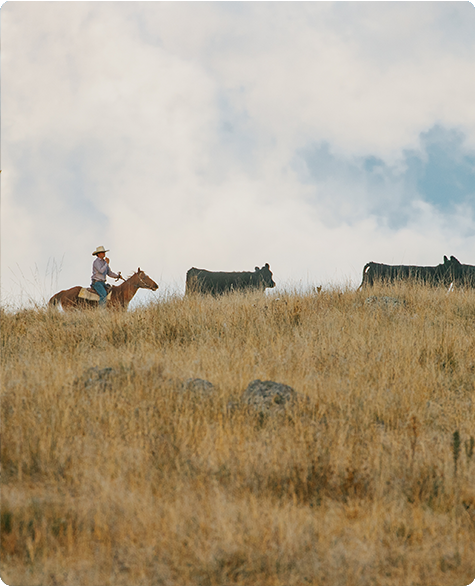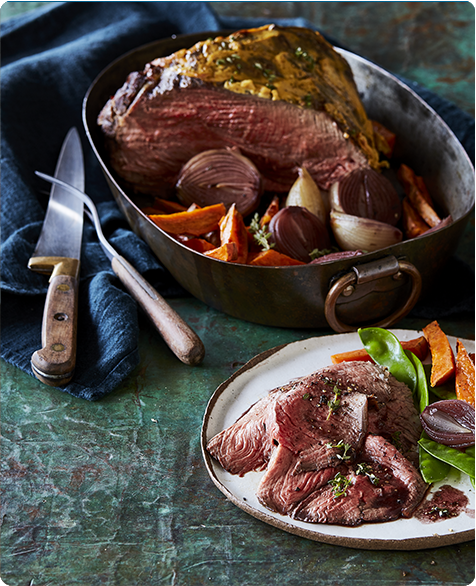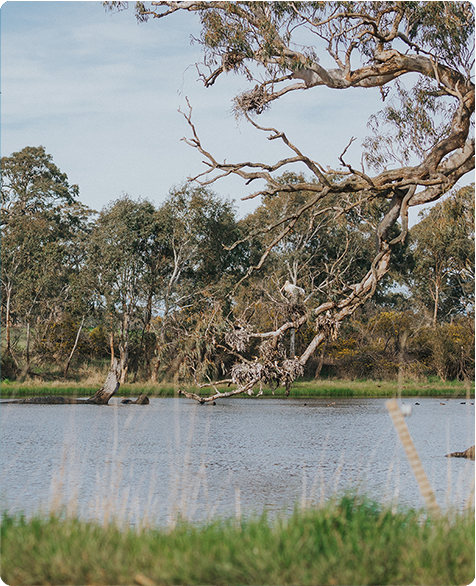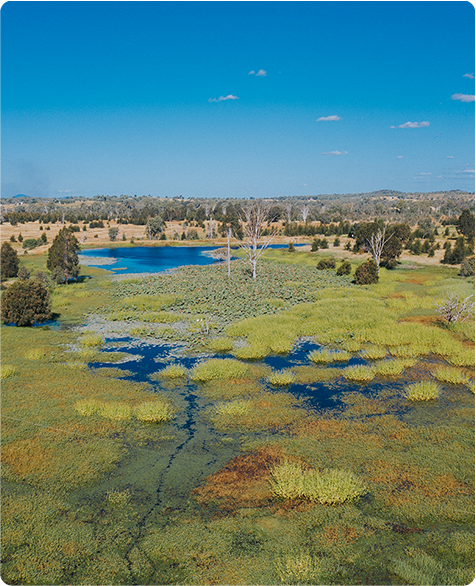1. Australian red meat isn't the global warming villain you may think it is
Cows, sheep and other ruminant animals are often linked to global warming because of the methane they emit during their natural digestive process (i.e. when they burp). Methane is a strong greenhouse gas (GHG) that is recognised as a contributor to global warming. But when it comes to the red meat industry, the climate change link is not as clear cut.
2. Livestock farming uses non-arable land productively
Because of Australia’s unique geological, topographic and climatic factors, less than 3% of Australia’s land is suitable for crop production. So, Australian cattle, sheep and goats make use of this non-arable land – that is, areas which aren’t suited for other farming such as crop production – converting pasture and shrubs into food.
Cows, sheep and goats largely consume a plant that cannot be eaten by humans – grass – converting this low nutrient plant into high-quality protein, fatty acids, vitamins and minerals that we can enjoy as part of a balanced diet. In addition, grazing of pastures by livestock helps remove GHG emissions from the atmosphere by stimulating more plant growth, which accelerates the absorption of CO2 from the air and turns it into carbon in plants and soil. For more on this, check out the biogenic carbon cycle explained.
3. Greenhouse gas emissions from red meat are falling
Compared to other sectors, the Australian red meat industry isn’t actually a big contributor to national GHG emissions. It currently contributes only 10.3% to national GHG emissions – well behind electricity generation (32.8%), stationary energy (22.2%) and transport (20.9%).
On top of this, GHG emissions from agriculture are falling. The Australian red meat industry has already reduced net greenhouse gas emissions by 64.85% 1since 2005. This reduction is larger than any other sector in Australia. Carbon neutral beef and lamb is already available from some producers.
4. Red meat has less impact on water scarcity than other foods
Since Australian cattle and sheep typically graze on native grasses, bushes and pastures, red meat production requires little to no irrigation, so there’s not much competition for water. In reality, red meat consumption contributes only 3.7% of the total dietary water-scarcity footprint (the potential impact associated with the quantity of water consumption). Based on this data, consuming red meat is less impactful to water scarcity than most other food groups, even cereals.
The amount of water used in raising Australian beef cattle has reduced to average 486 litres per kilogram liveweight. They’ve been able to do this by applying a range of sustainable farming practices, such as:
- Reducing irrigation for pasture production
- Capping free flowing artesian bores to reduce evaporative losses
- Genetic and breeding programs to increase growth rates.
It now takes 73% less water to produce1kg of beef than it did 35 years ago. Since 2017, the Australian Beef Sustainability Framework has tracked the industry’s water efficiency. You can read about the industry’s progress in the Annual update.
5. Red meat aims to be carbon neutral by 2030
Further reducing net GHG emissions from grazing management, lot feeding and processing is a priority for the Australian red meat industry, which has a goal of being carbon neutral by 2030 (CN30). With the CN30 Roadmap guiding the industry towards achieving this target, Australian red meat producers are reducing net emissions through:
- Pastures, shrubs and legumes that improve livestock productivity and lower methane emissions
- Animal genetics and husbandry practices to increase efficiency and reduce methane emissions intensity
- Equipment to capture and reuse methane from processing waste treatment
- Energy efficiency and renewable energy technology to reduce CO2 emissions from the use of fossil fuels
- Equipment to reduce nitrous oxide (N2O) and methane emissions from manure lot feeding
- Savanna burning management methods to avoid emissions of N2O and methane.
The Australian red meat industry cares about its impact on the environment. Reducing net GHG emissions, optimising land and water usage, and working towards its CN30 target are major goals for everyone involved. So, enjoy red meat as part of a balanced diet, and know that it’s doing a world of good.
1 Data analysed from 2020 National Greenhouse Gas Inventory.






